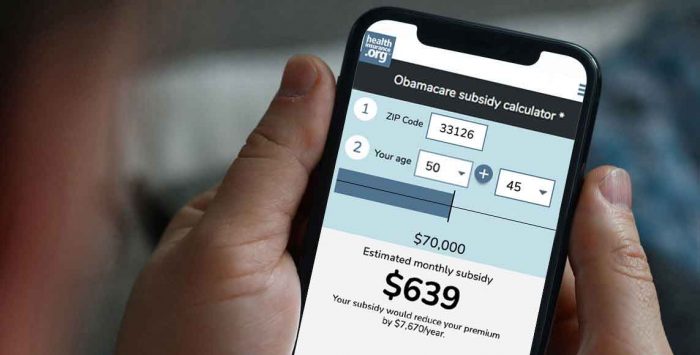Please provide your zip code to see plans in your area.
Featured

Featured

health insurance premium
What is a health insurance premium?
What is a health insurance premium?
A health insurance premium is the amount – typically billed monthly – that policyholders pay for health coverage. Policyholders must pay their premiums each month regardless of whether they visit a doctor or use any other healthcare service.
Health insurance through Medicare, the health insurance marketplace, or an employer will almost always require consumers to pay a premium – although enrollees may qualify for financial help for Medicare or marketplace policies depending on their income level. Medicaid typically requires small or no premiums.
How can I find out what my premium will be?
Health plan websites and printed marketing materials provide premium and other cost information. Don’t sign up for a plan without carefully reviewing all the terms of the coverage and comparing all costs: not only the monthly premium, but also deductible and copayment/coinsurance amounts. For example, if you or a dependent have a chronic illness it may be more cost-effective for you select a plan with a higher premium, but a lower deductible. (Then again, you may come out ahead with a lower premium and a higher deductible. There’s no single right answer that works for everyone.)
If you are buying insurance through the health insurance marketplace/exchange in your state, the marketplace will help you review the available options and compare their costs. An online or in-person broker who is certified by the marketplace can help you make sense of the available options and understand how much you’d pay in both premiums and out-of-pocket medical costs.
If you are eligible for Medicare, one helpful resource for comparing options is the Medicare Plan Finder tool, which lets users compare Medicare Advantage, Medigap, and Medicare Part D plans, including expenses and coverage.
If you are comparing health plan options through your employer, check with your employer’s human resources department. They often can point you to online tools to help you compare the options. These tools help you evaluate the types of healthcare services you might need over the plan year and help you choose the plan that makes the best financial sense for you and any dependent you plan to cover under your policy.
What is a typical premium?
Premiums vary significantly from plan to plan. For people who buy their own coverage in the marketplace, the average full-price premium (ie, before subsidies are applied) in 2020 was $575/month, although it varies considerably depending on the metal level of the plan, the insurer that’s offering the policy, the geographical area, and the age of the enrollee. And very few marketplace enrollees pay full price for their coverage. As of 2020, 86% of enrollees were receiving premium subsidies, which averaged $491/month – offsetting the majority of the average premium. And thanks to the American Rescue Plan, subsidies are considerably larger in 2021, and available to more people, making coverage more affordable than it’s been in past years.
According to the Kaiser Family Foundation (KFF), the 2020 average total premium for employer-provided coverage for a single employee was $623/month. Of that amount, the average worker paid $124/month and the average employer paid $519/month. For family coverage, the total average premium was $1,779/month, but again, employers pay the bulk of that: the average employee with family coverage has to pay just $466/month in premiums, while the employer covers the rest.
But this varies considerably from one employer to another. And although large employers are required to ensure that coverage is affordable (to avoid a financial penalty), that only applies to coverage for the employee; it does not count the cost of coverage for family members.
How can I lower my premiums?
If you switch to a plan with fewer benefits, a smaller provider network, or more restrictive managed care rules (an HMO with no out-of-network benefits, for example), you’ll generally pay lower premiums. This is true for employer-sponsored plans as well as plans that people purchase on their own in the marketplace.
How does the Affordable Care Act help lower premiums?
The premium subsidies are a direct result of the ACA, and they’re the primary means of keeping premiums affordable. But the ACA also ensures that state insurance regulators and the federal government conduct thorough reviews to ensure that premiums are actuarially justified before they’re implemented for the coming year. And the law also created a medical loss ratio rule, which requires insurers to spend the majority of premiums on medical costs, as opposed to administrative costs.
How does the American Rescue Plan (2021 COVID relief) help lower premiums?
The American Rescue Plan eliminates the “subsidy cliff” by ensuring that nobody has to pay more than 8.5% of their income for the benchmark marketplace plan. It also lowers the percentage of income that people have to pay for the benchmark plan, regardless of their income level.
How do carriers set their health insurance premiums?
Insurers set premiums based on the overall claims experience of their entire risk pool, and projected costs for the coming year. In the individual and small-group health insurance markets, insurers set an index rate and then can only vary it based on zip code, age, and tobacco use. (Some states impose their own limits that are even more restrictive in terms of how insurers can vary premiums.)
What factors affect my health insurance premium?
If you’re purchasing individual/family coverage, your premiums depend on your age, zip code, and tobacco use, as well as the insurer that you select (different insurers offer similar plans with varying premiums). But the biggest factor that affects the premium amounts that people actually pay is income. Premium subsidies are based on income, and they can offset a large portion (or even all) of the premium that a person would otherwise have to pay.
Do health insurance premiums increase as policyholders age?
In general, yes. In the individual/family market, premiums in nearly every state are three times higher for a 64-year-old applicant than they would be for a 21-year-old applicant. But again, premium subsidies can level this difference: If an older person and a younger person earn the same income, the older person’s subsidy amount will be larger, to make up for the higher base premium.
Are health insurance premiums tax-deductible?
It depends. If you have employer-sponsored coverage, you’re almost certainly already paying your premiums with pre-tax dollars. If you purchase your own health insurance, you can deduct your premiums if you’re self-employed (but only the portion you pay yourself; you cannot deduct the part that’s covered by premium subsidies).
Related articles
Legislation signed today provides substantial premium tax credits and cost-sharing reductions to Americans receiving unemployment benefits.
How the Affordable Care Act's subsidies are calculated, and who is eligible to receive them under the American Rescue Plan.










